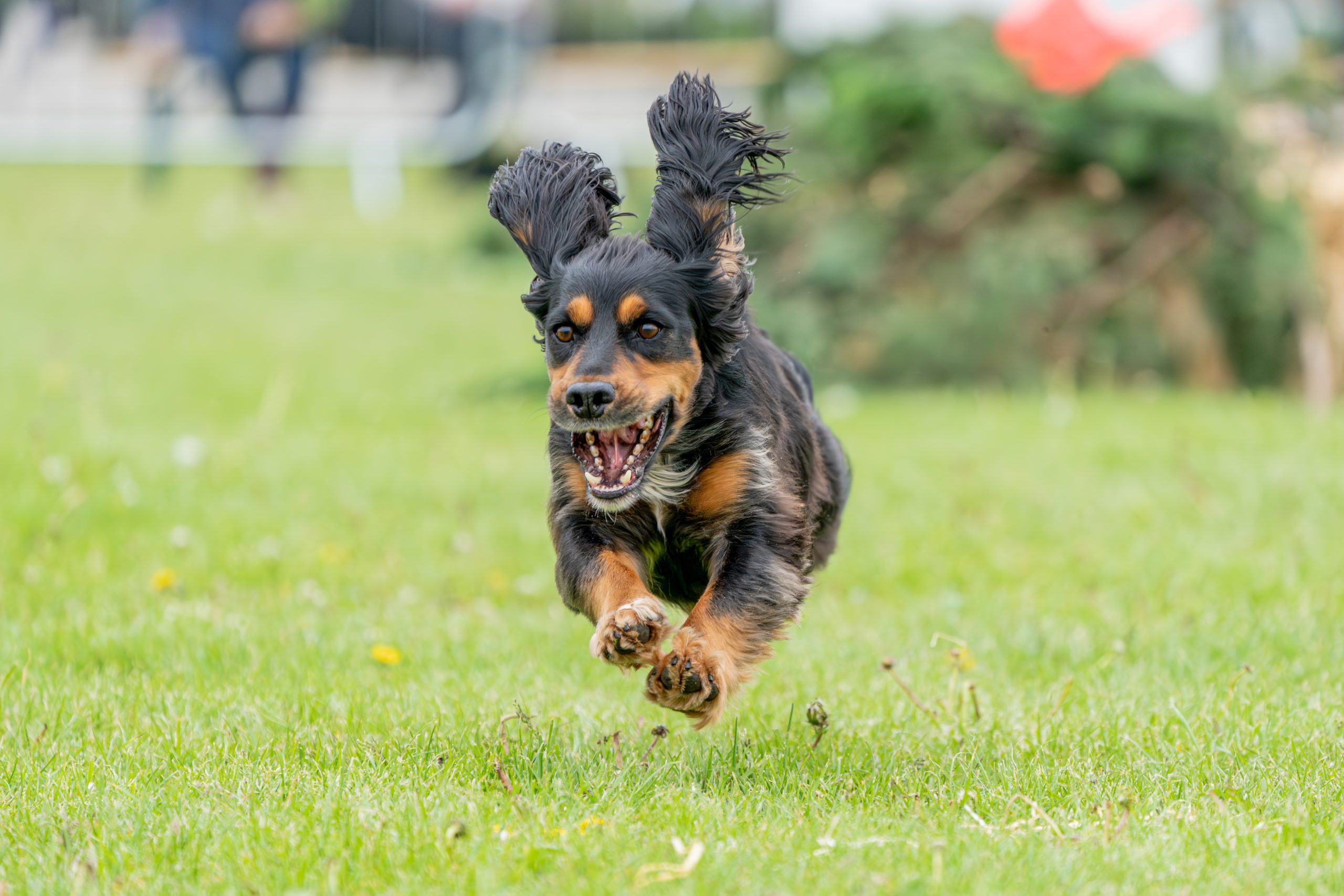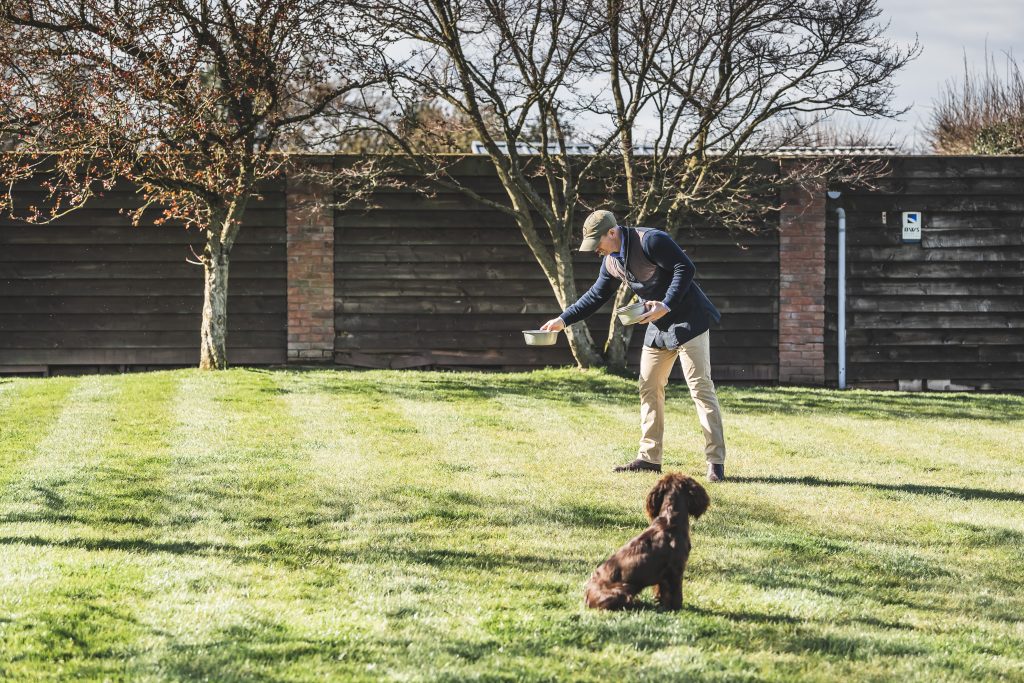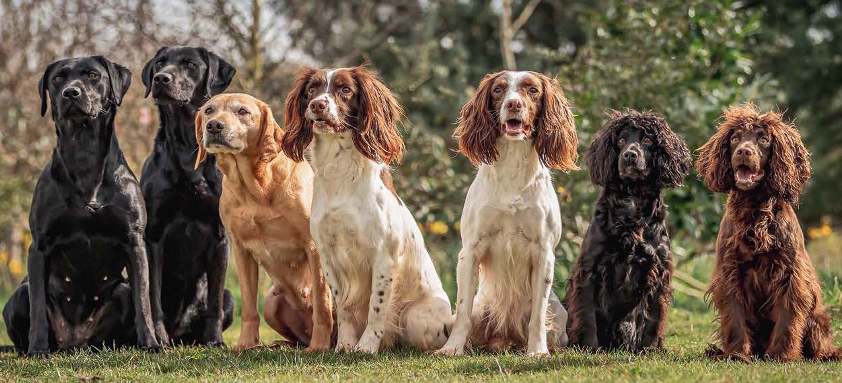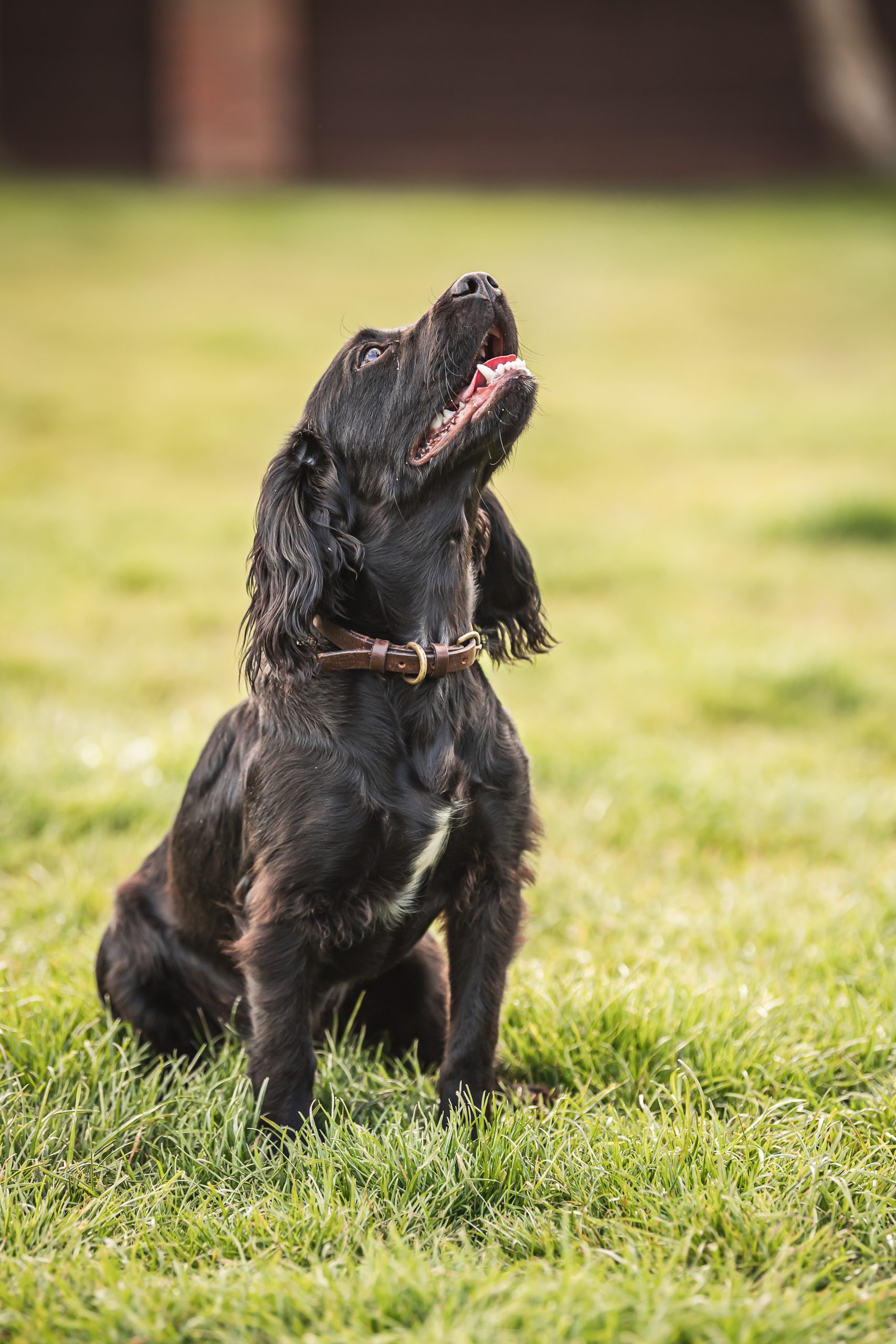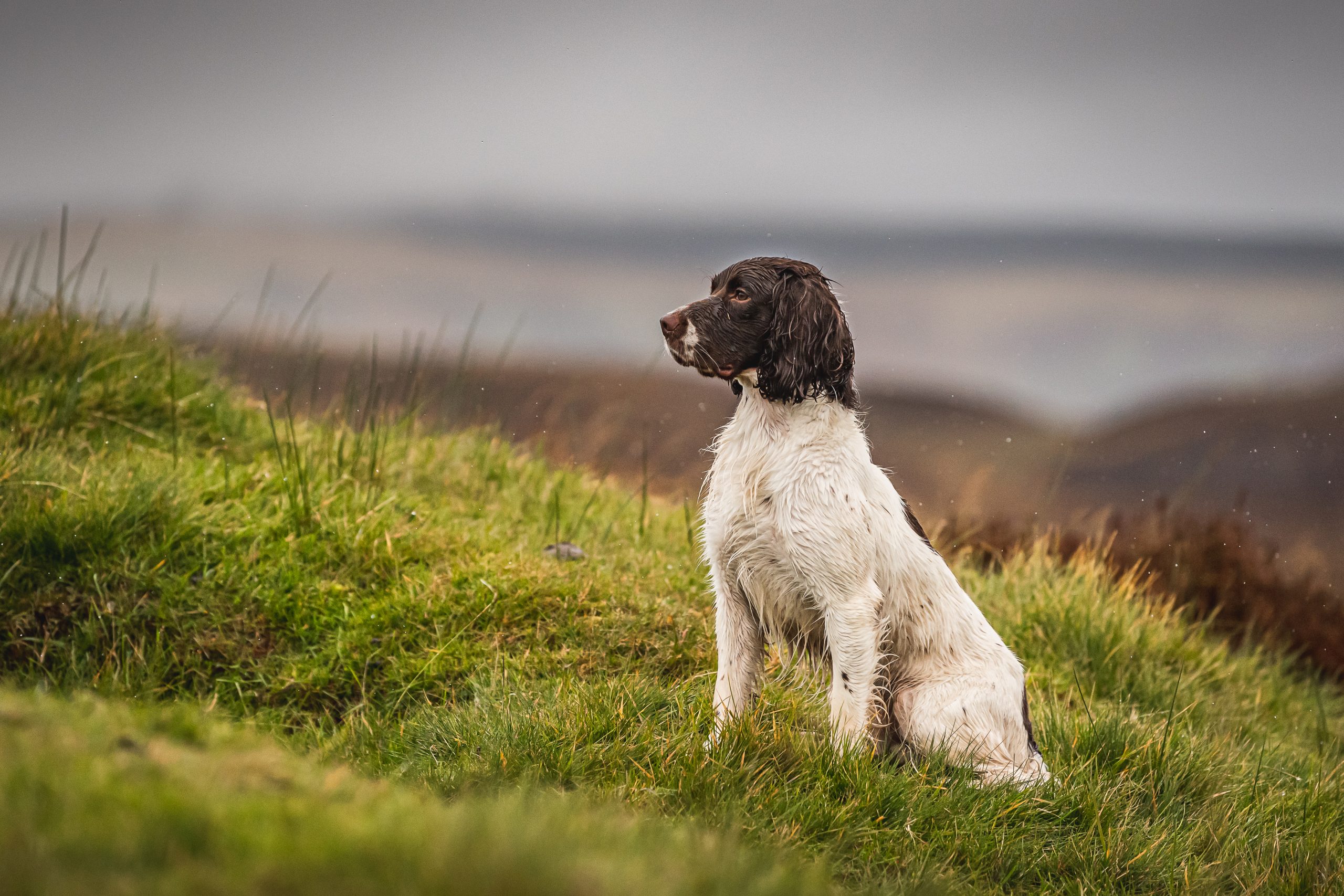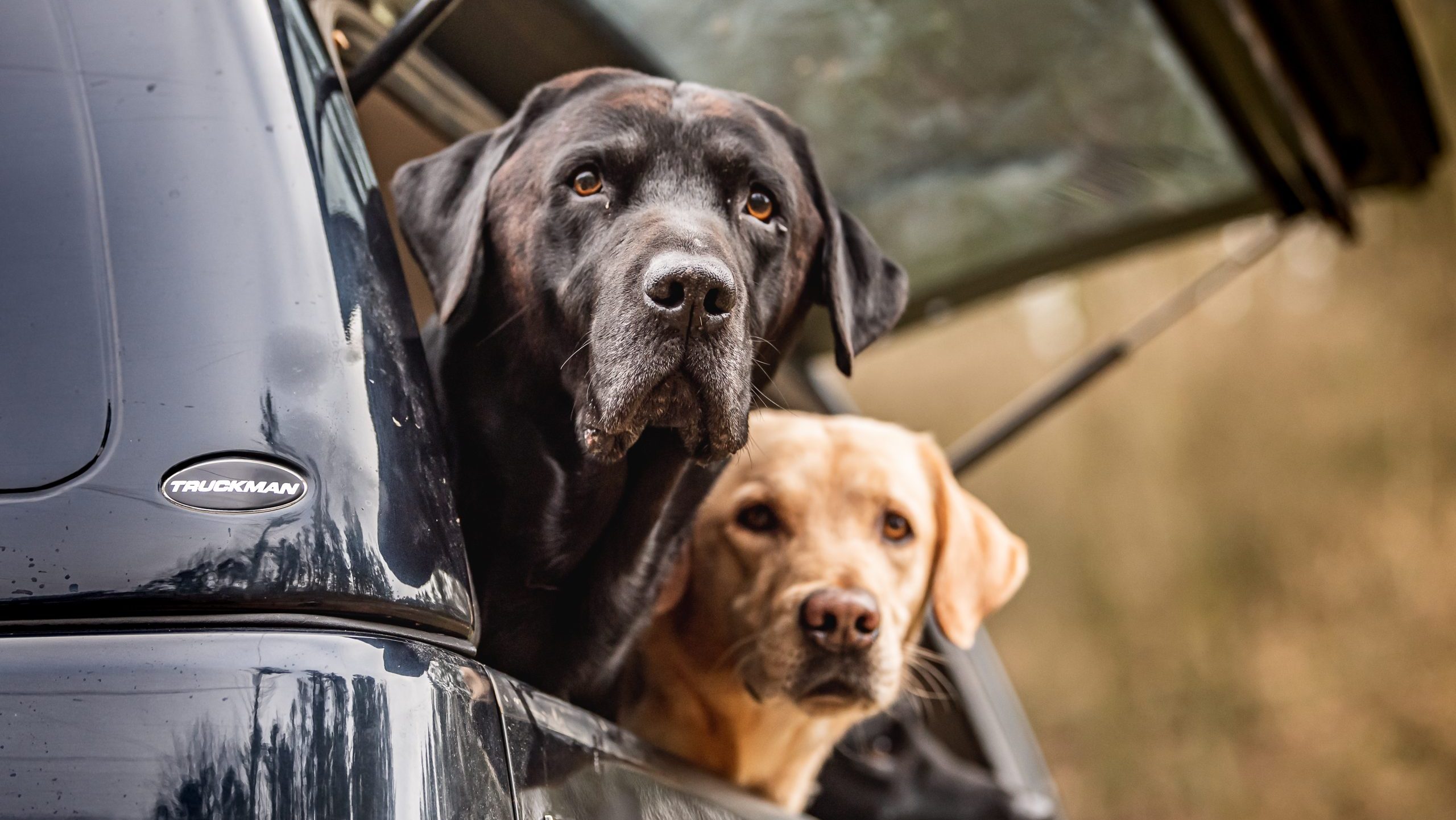Training
The labrador pioneers
Nick Radclyffe delves into the family archives to reveal the story of his forefathers and the first Kennel Club registered yellow labrador.
Would you like to appear on our site? We offer sponsored articles and advertising to put you in front of our readers. Find out more.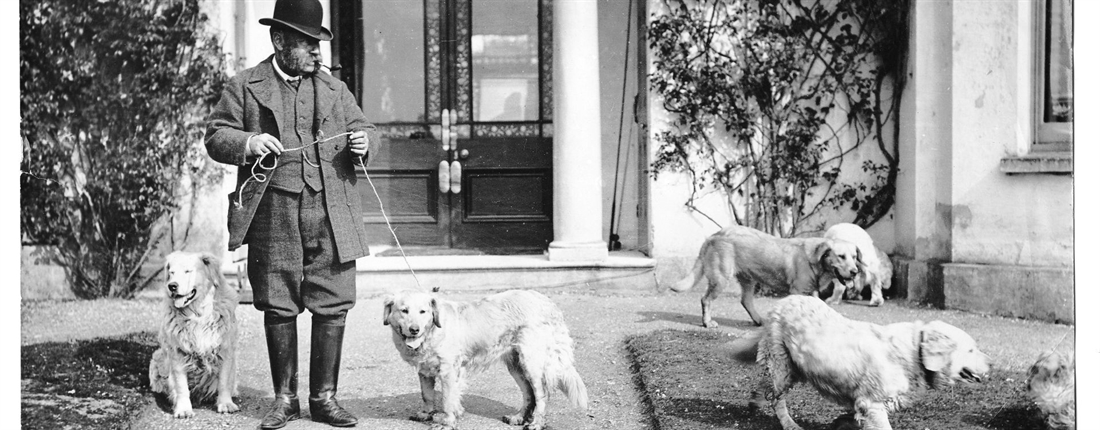
The history of the labrador is beset with contradictory tales and indeed one author stated in an article on the subject: “The only certainty about the origin of the labrador retriever is that we cannot be absolutely certain of its provenance”.
Labrador itself is the most easterly point of North America and drew settlers due to the wealth of its fishing banks. A trade in fish was established with the West Country in England and there can be little doubt that many dogs of a variety of breeds travelled back and forth across the Atlantic. It has been argued that among the breeds that accompanied the fishermen there may have been the famed black hounds of St. Hubert, which were greatly valued. It is suggested this breed was part of the foundation stock of the dog which later became the labrador retriever.
What we do know is that the first labradors came in to England via Poole Harbour and the majority of early breeders got their dogs from there. Early owners included Colonel Peter Hawker, The 2nd Earl of Malmesbury, The Duke of Buccleuch, The 10th Earl Home, the Lords Wimborne, Saltoun and Ruthven and finally Montague Guest and CJ Radclyffe (the latter being my great grandfather).
Great care was taken by these early breeders to keep the breed pure and by the early part of the 20th century the labrador was recognised by a growing band of owners as a first class gundog. On 7 July 1903 the labrador retriever was recognised as a special breed by the Kennel Club and four months later it was at last admitted as a separate breed.
A RESOURCEFUL OLD TURK
The Radclyffe’s estate at Hyde House was just outside Bere Regis less than 15 miles from Poole Harbour, and therefore was integral to the very beginning of the process of bringing in dogs from Labrador and Newfoundland. As a young boy my grandfather (CRE Radclyffe) would accompany his father (CJ Radclyffe) on shoot days and in later life he recorded these early years of the breed: “At that time my father owned a very celebrated labrador dog, named Turk, which he had specially imported from Newfoundland, before the days when so-called labrador dogs became popular. It was my father’s boast that this dog would never lose a wounded bird or animal so long as they did not go to ground.”
He then went on to record the following story about Turk: “One day at a big shoot at Milton Abbey, just as we were going in to the keeper’s house for lunch, the host, Colonel Hambro, called out to my father: “Here Charlie, I wish you would bring your dog here. There is a running cock pheasant down which none of our dogs can find.” The dog was duly sent in to a thick bit of covert and disappeared for some time. After a while my father said: “Let us go into lunch. I will bet anything the old dog will come back with the bird before long.” And sure enough about 10 minutes after we had gone into the house the headkeeper looked in at the door and said to my father: “Your dog brought back the cock pheasant and I have taken it away from him”.
After the usual congratulations and plaudits like ‘the best dog in England’ etc the episode was forgotten for a time. But after lunch my father’s loader came to him and said. “Please sir, the man in charge of the game cart told me just now that, when he was driving back to lunch, old Turk came galloping down the ride behind him, jumped on the back of the cart, took a cock pheasant and went off with it.” My father replied: “Well damn it all I told you the old dog would not come back without something.””
THE BREEDING OF THE WHITE LABRADOR
Since the 1870s my great grandfather had been keeping a large kennel of gundogs and had early on focused on both the black labrador and, his own pet fancy, the white retriever. This is an extract from Country Life from 1908: ‘On the estate of Mr. C. J Radclyffe, at Hyde in Dorsetshire, a visitor may see a pure white breed of the old-fashioned… wavy-coated retrievers. Mr. Radclyffe has kept for more than 45 years a well-known breed of these wavy-coated dogs, which until a certain date were all black. A matter of 10 or 12 years ago, in certain of the litters sired by one particular dog, one or more of the puppies were born pure white in colour. This dog was a purebred scion of the old breed, and there was no chance of there being any mongrel blood in his veins. In the course of time the owner hoped to perpetuate a breed of white dogs by breeding from his favourite white dog Gipsy. But out of the first 46 puppies sired by this dog from black mothers not one of the pups was white. On the other hand, some of the white bitches had whole litters of white puppies. And by breeding from white dogs and bitches, which were of necessity in the first instance rather closely related to each other, Mr. Radclyffe has been able to establish a breed of these dogs, which it is hoped in future will breed descendants true in colour to their white parents.”
THE BIRTH OF BEN OF HYDE
In 1899 a black bitch bred by Lord Wimborne was in whelp to Mr. Radclyffe’s Neptune 1892, also a black dog. The litter was born in 1899 of which one dog and one bitch were yellow. The dog was called Ben and the bitch Juno. Both were bred from and Juno’s stock were all black but Ben’s were yellow and consequently CRE Radclyffe (my grandfather) decided to concentrate on yellow labrador retrievers.
It was Ben of Hyde who was the first yellow labrador registered with the Kennel Club and from whom so many of the yellow labradors of today are descended. Ben was also renowned for being an excellent retriever of fish.
It apparently took two generations before there were no throwbacks to black. My grandfather continued to breed yellow labradors and his sister-in-law Audrey Radclyffe continued to trial yellow labradors until well into the 1980s.
TOO MANY DOGS TO COUNT
My grandfather told a story long after his father had died to show the scale of his love of both horses and dogs: “Some years ago I remember the present Lord Knutsford, who was then the Hon Arthur Holland-Hibbert, on the occasion of a visit to my home asking my father how many dogs he had on the estate. He was immensely amused when I said: “I will bet a fiver that my father does not know if he has more dogs or horses on the place or vice versa.” At which my father said: “Done! I will bet you I have more dogs than horses.” The result of a tally next morning was that I won the fiver as there were 64 dogs and 66 horses.”
Related articles
Training
Patience is a virtue
It’s a skill that is often overlooked in training, but which is vital for all gundogs. Ben Randall explains how to capitalise on some everyday opportunities to practice it, now that spring is here.
By Time Well Spent
Training
The theory of puppy training
When you collect your puppy – and at every stage thereafter – you’ll need a safe and secure form of transportation. Here are four high-quality options to suit all requirements.
By Time Well Spent
Get the latest news delivered direct to your door
Subscribe to Gundog Journal
Unlock the full potential of your working dog with a subscription to Gundog Journal, the UK’s only dedicated magazine for gundog enthusiasts. Published bi-monthly, this authoritative resource delivers expert training advice, in-depth interviews with top trainers and veterinary guidance to help you nurture a stronger bond with your dog.
Whether you’re a professional handler, breeder, or simply passionate about gundogs, each issue offers a wealth of knowledge on breeds like labradors, spaniels and vizslas. Subscribers gain access to topical articles, real-life stories and exclusive offers from trusted brands.
With stunning photography and thought-provoking content, Gundog Journal is your essential guide to understanding, training and celebrating these remarkable working breeds.


Manage Consent
To provide the best experiences, we use technologies like cookies to store and/or access device information. Consenting to these technologies will allow us to process data such as browsing behavior or unique IDs on this site. Not consenting or withdrawing consent, may adversely affect certain features and functions.
Functional Always active
The technical storage or access is strictly necessary for the legitimate purpose of enabling the use of a specific service explicitly requested by the subscriber or user, or for the sole purpose of carrying out the transmission of a communication over an electronic communications network.
Preferences
The technical storage or access is necessary for the legitimate purpose of storing preferences that are not requested by the subscriber or user.
Statistics
The technical storage or access that is used exclusively for statistical purposes.
The technical storage or access that is used exclusively for anonymous statistical purposes. Without a subpoena, voluntary compliance on the part of your Internet Service Provider, or additional records from a third party, information stored or retrieved for this purpose alone cannot usually be used to identify you.
Marketing
The technical storage or access is required to create user profiles to send advertising, or to track the user on a website or across several websites for similar marketing purposes.


